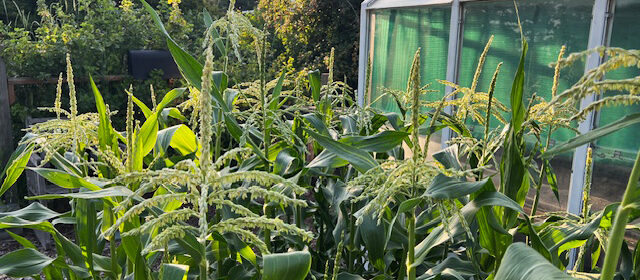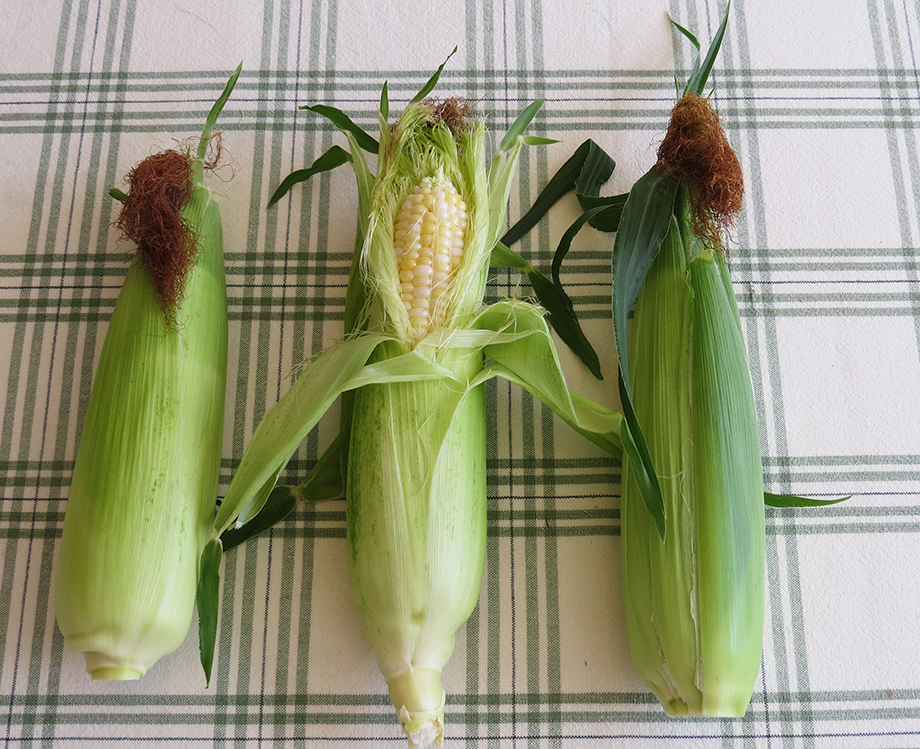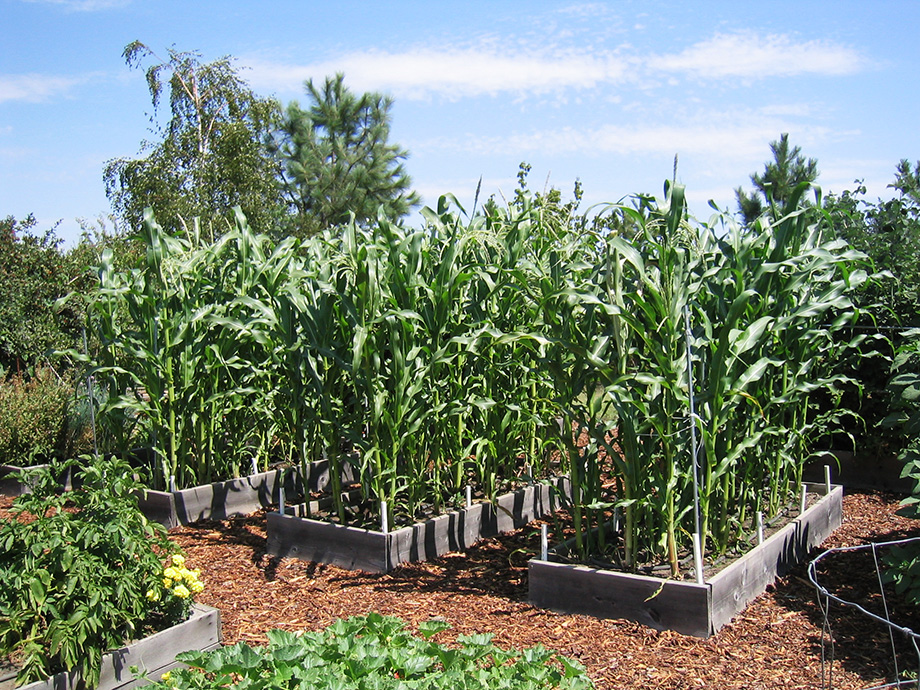How to Grow Corn

I love to grow corn because homegrown ears are so sweet and delicious. Check out my special spacing suggestions below and recommended varieties. You’ll also learn what to look for so you know your corn is ready to pick.
Latin Name: Zea Mays
Plant Family: Grass (Poaceae)
Warm-season crop
Did You Know?
Corn, or maize, was developed from a wild grass called teosinte in Central America about 10,000 years ago. Through trading, corn spread throughout North America, to Europe, West Africa, China and India. Today, the United States is the primary producer of corn.
In my garden, birds (specifically California quail) like to nibble on freshly-sprouted corn seeds. I’ve adopted the practice of starting my seeds indoors a couple of weeks before I’m ready to transplant them into the garden. This gets them off to a better start so they can fend for themselves.
Plant Seeds or Seedlings? To grow corn, you can either sow seeds directly in the garden or start them indoors. If you do the latter, transplant the seedlings into the garden when they are 4 to 6 inches tall.
When: Direct-sow seeds after all danger of frost is past. You can also sow seeds indoors 2 to 3 weeks before the average last frost date for your area.
Days to Germination: 7 to 10 days
Depth to Sow: 1 inch. For the best possible germination, orient the seeds with the pointed end facing downward.
Spacing: Traditional spacing is 18-24 inches between plants within a row and 36 inches between rows. In my raised beds, I grow corn 12 inches apart in all directions and they grow and produce beautifully.
Days to Maturity: 70 to 90
Cultural Information:
Corn plants are heavy feeders so be sure to add compost to the soil prior to planting seeds or seedlings. Feed the seedlings with an organic nitrogen fertilizer such as diluted fish emulsion after transplanting them. Repeat the feeding in 3 weeks. I live in a windy area so I have a method to keep plants from snapping off at the base during a windstorm. I put stakes at the corners and middle of the bed and wrap jute twine around them at heights of 12, 24 and 48 inches. The plants gently sway in the wind but don’t get knocked down. That is definitely a game-changer! (see photo below)
Susan’s Picks: ‘Sweetness Bicolor’, ‘Silver Queen’, ‘Luscious’
Potential Insect Problems: Corn earworms, earwigs.
When to Harvest:
The silks at the end of each ear will be dry and brittle. The ear should also feel rounded at the tip, indicating the kernels have developed. If you’re still not sure, carefully peel back a bit of the husk to look at the tip of the ear. Are the kernels full? Then it’s time to pick.
How to Cook & Preserve:
Boil ears of corn in water for about 5 minutes. You can also microwave whole ears (with the husk still in place) for 2 minutes per ear. That’s our preferred method. To freeze for later use, either cook the ears and freeze them whole or slice off the kernels. Place the ears or kernels into a freezer bag and pop them into the freezer. You’ll appreciate that extra effort in the dead of winter! Corn relish is a special treat that is a combination of corn kernels, peppers, celery and onions. It is pickled and canned using the water-bath canning method.
My Videos About Growing Corn:
- How to Grow Sweet Corn
- How to Support Corn Plants (this is an old video!)
- Learn How to Tell When Your Corn is Ripe (this is a YouTube Short)
Back to Vegetable Grow Guide Chart
Copyright: Susan Mulvihill, Susan’s in the Garden, SusansintheGarden.com.


